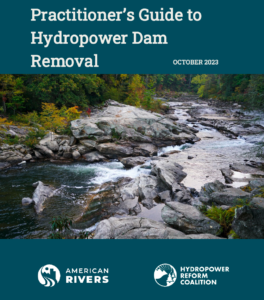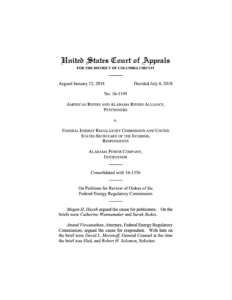Wild Atlantic Salmon Recovery in Maine: The “King of Fish” Makes a Comeback
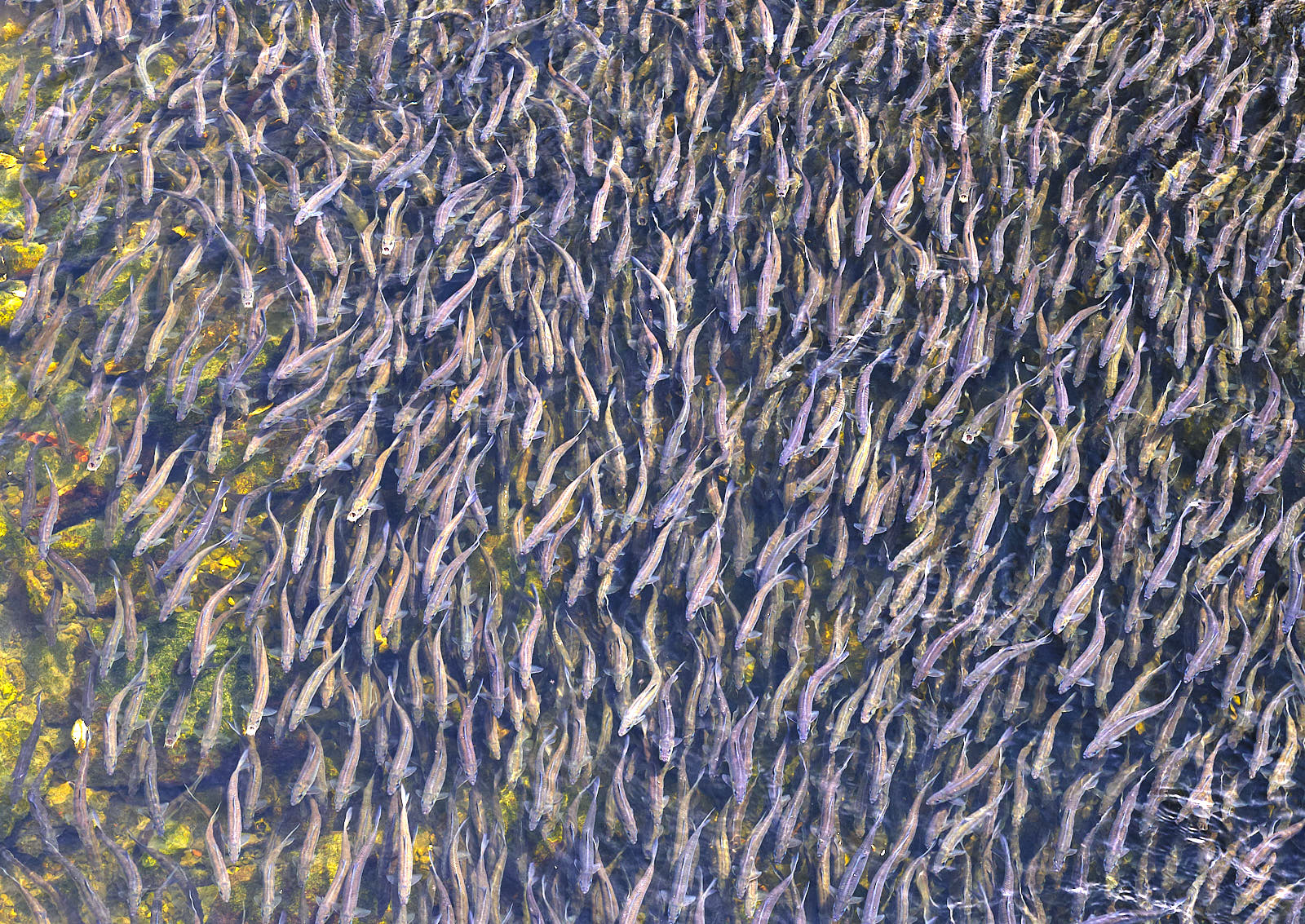
An alewife run. Alewives are another fish species benefiting from AMC’s habitat restoration work in Maine. Photo by John Lichter.
A river streaming with silvery scales. Tens of thousands of determined fish, swimming upstream and leaping over barriers to spawn. Water teeming with life.
This sight was once common from the Gulf of Maine to some of the most remote streams and ponds in the Appalachian Mountains. In late fall female salmon would burrow into riverbeds and make nests of pebbles to deposit their eggs for the next generation of salmon to hatch and grow in the spring.
Historic salmon populations in the Penobscot River and its tributaries once reached over 100,000 fish. Now that number is just over 1,000.
Dams, pollution, and overfishing have caused a decline in Atlantic salmon numbers. However, the “King of Fish” isn’t gone yet — and with the help of AMC, this mighty fish is making a comeback in Maine.
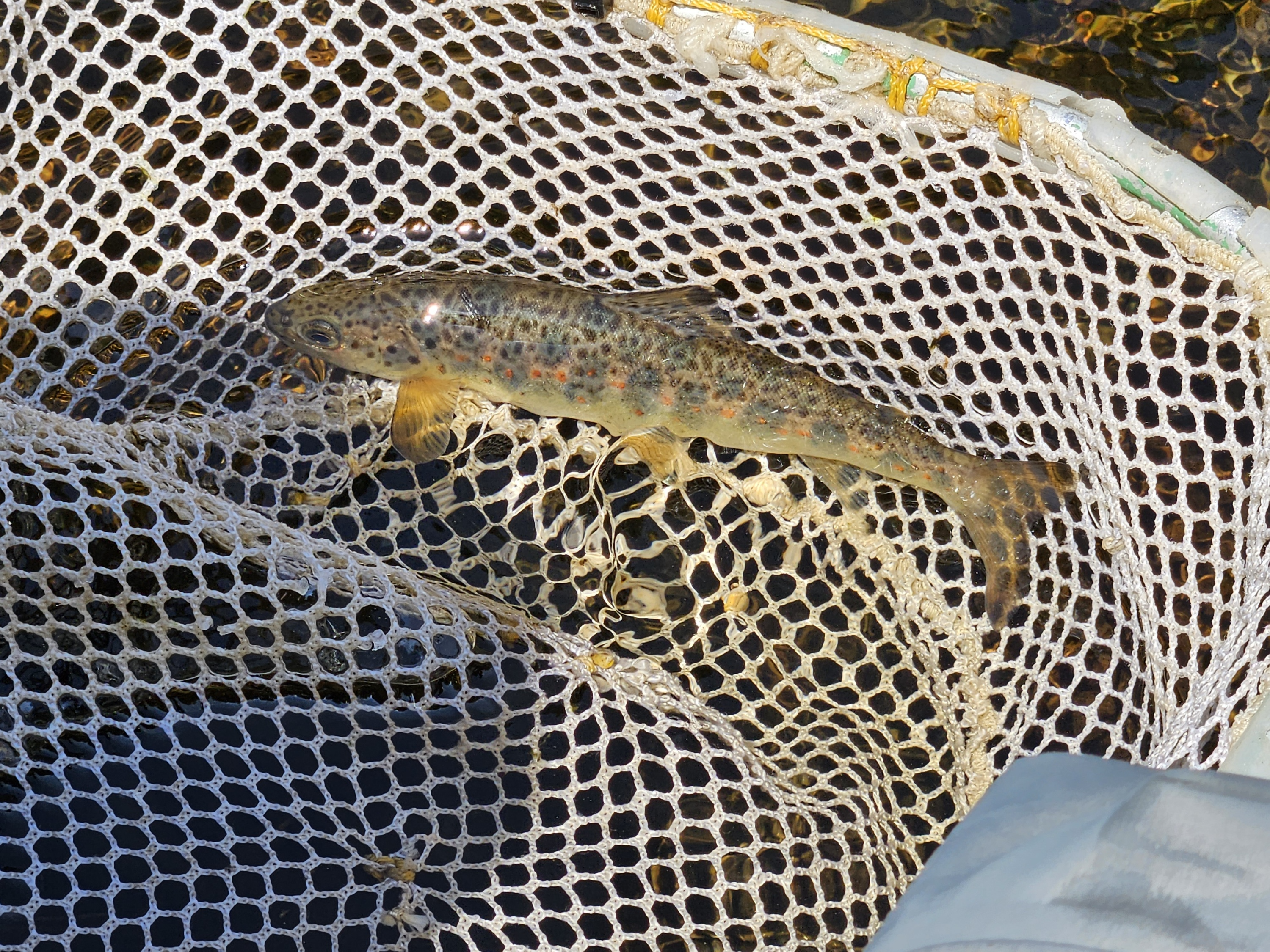
A juvenile Atlantic salmon, caught and released on the west branch of the Pleasant River.
Oceans and Rivers
Atlantic salmon, also known as sea-run salmon, are large, predatory fish that thrive in cool, clean waters. They’re anadromous, meaning they live in both fresh and salt water. They live the first part of their lives in freshwater rivers before migrating to saltwater to mature, then returning to rivers to spawn.
Atlantic salmon are an indicator species for water quality in their ecosystems, including not just rivers, but riverbanks and surrounding forests. A healthy salmon population can indicate clean water and a thriving ecosystem. A suffering population warns of the opposite.
Roughly 200 years ago, Atlantic salmon populations began to crash. Dam construction and pollution from logging and industrial runoff made it almost impossible for them to return to spawn. At sea, commercial fishing operations decimated their numbers. In efforts to restore Atlantic salmon, commercial fisheries were closed in the U.S. in 1948. Log driving from the timber industry, which involved floating logs down salmon streams, was outlawed in Maine in 1976, briefly improving habitat quality and function. However, this wasn’t enough. In the 1980s and 1990s, recreational and catch-and-release salmon fishing stopped as the population continued to struggle. Atlantic salmon were listed as a federally Endangered Species in 2000.
Today Maine is the only place in the United States where wild Atlantic salmon can be found. 95% of those salmon returns (when adult fish come back to spawn) occur in the Penobscot River and its tributaries.

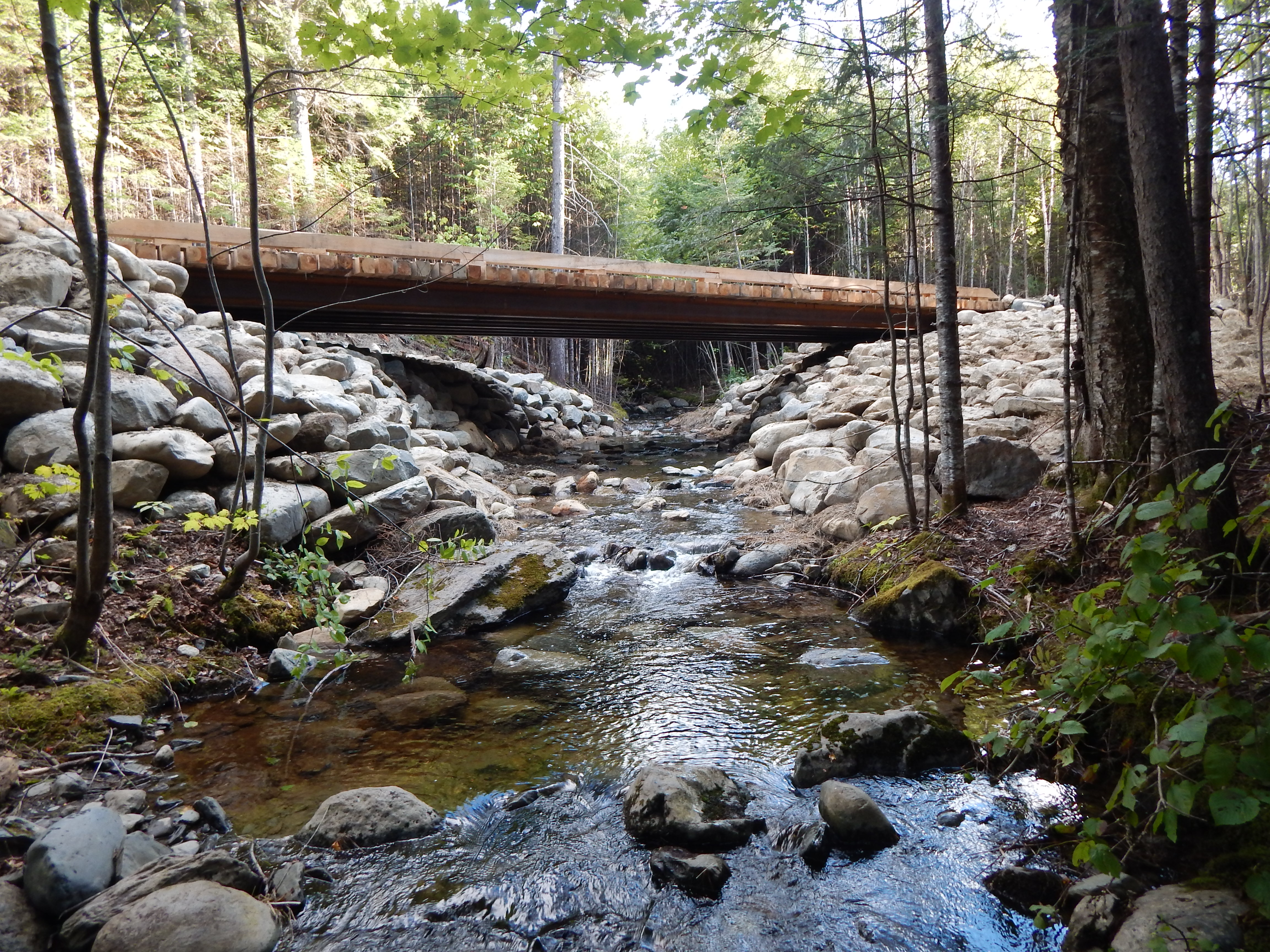
AMC staff and partners replacing a culvert with an ecological bridge, before and after. Photos by Garrett English and AMC staff.
Oh, Dam
Gulf of Maine salmon only have unimpeded access to 8% of their historic river habitat. The biggest obstacle to their population recovery is getting to their spawning grounds. Dams were constructed by paper mills, townships, and hydropower facilities along the Penobscot River starting in the 1830s.
That’s where AMC and other organizations – a coalition of State, Federal, Tribal, and Non-governmental organizations – come in. Partners like the Penobscot Nation, NOAA, the Natural Resources Council of Maine, and the Atlantic Salmon Federation formed the Penobscot River Restoration Project, one of the largest watershed restoration projects in the nation. AMC became involved in dam removal and Atlantic salmon recovery in 2012, when we were invited to take part in the project by the Natural Resources Council of Maine. Staff played a small role in work on the main branch of the Penobscot before taking the lead in the headwaters of the West branch of the river.
Dams and undersized culverts along the Penobscot and its tributaries block salmon from accessing their cold-water spawning grounds, which are essential for laying eggs and growing their populations. When these obstacles are removed, salmon regain access to those areas, and have the opportunity to recover and thrive.
Plus, there are other fish in the sea — er, river. The Penobscot River is home to 90% of the eastern brook trout habitat in the U.S., another fish species that needs cold, clear waters and is seeing its habitat shrink.
Barriers hurt more than just fish. Anglers and guides must navigate around them. Stream blockages separate sections of rivers, preventing waterways from naturally balancing their temperatures and neutralizing acidity. Undersized culverts can “blow out” with rain, causing road damage and access issues. Replacing them helps manage high-impact rain events, which are becoming more common due to climate change. This means dam removal and culvert replacement are climate-, people-, and fish-smart.
“We want to restore total ecosystem functionality in the Maine Woods Initiative areas,” Steve Tatko, AMC’s Vice President of Land, Research, and Trails, explains.
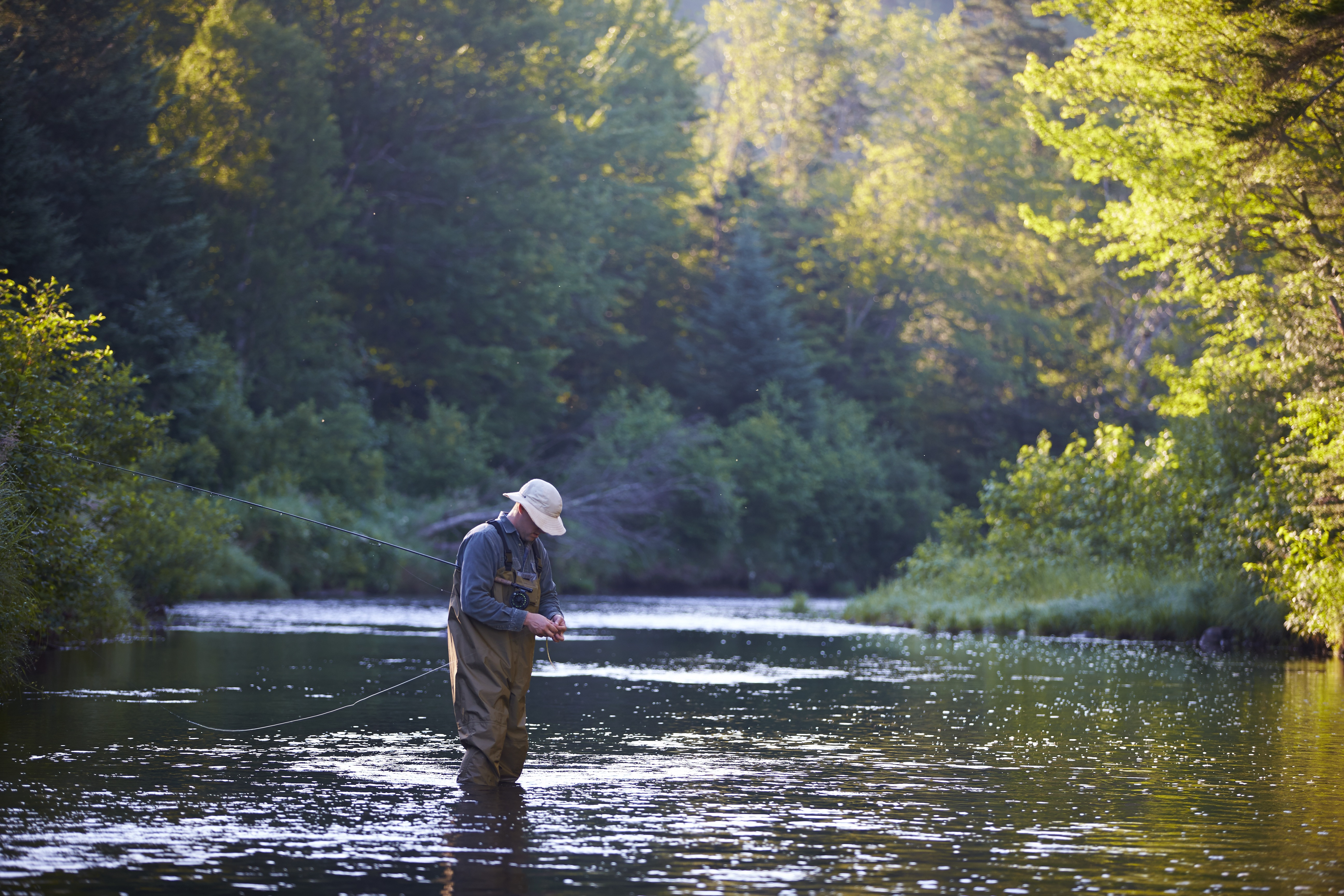
A fisherman near AMC Gorman Chairback Lodge and Cabins. Stream barriers also impact anglers and guides.
Open Waters
AMC has been involved in salmon habitat rehabilitation since 2012, working with the Natural Resources Council of Maine. We’ve replaced or removed over 134 culverts, reconnecting over 126 miles of fish stream habitat. Our goal?
“To ensure there are no barriers to fish passage on AMC land,” says Tatko.
Fish passage work involves the local community. Our local contractor partners are now nationwide experts in culvert removal and fish-friendly road crossing installations, using their skills in partnership with us to develop new technologies to provide solutions for Atlantic salmon recovery. New bridges are fabricated locally, and community connections deepen as our work continues.
This work has already led to hopeful results. In 2020 the West Branch of the Pleasant River saw its first return of sea-run fish in 180 years. Numbers were initially low, but are rebounding quickly — in 2021, the Atlantic Salmon Federation reported 561 adults returning to the Penobscot watershed, and by 2022, 1,324 adults.
Atlantic salmon are still endangered, and their population, though rebounding, hasn’t recovered to its historic numbers yet. Our work continues to support the return of the “King of Fish.” We’re still removing culverts, and the State of Maine is conducting studies to see how water temperature and acidity impact salmon well-being. To date, AMC’s MWI lands are the furthest inland scientists have found Atlantic salmon. This shows that culvert replacement, dam removal, and more attention to salmon habitat are helping their numbers flourish.
As indicator species, Atlantic salmon have a lot to tell us. Their disappearance warned us of river health and other issues. Their return tells us that now, those tides could be changing.
The post Wild Atlantic Salmon Recovery in Maine: The “King of Fish” Makes a Comeback appeared first on Appalachian Mountain Club (AMC).

